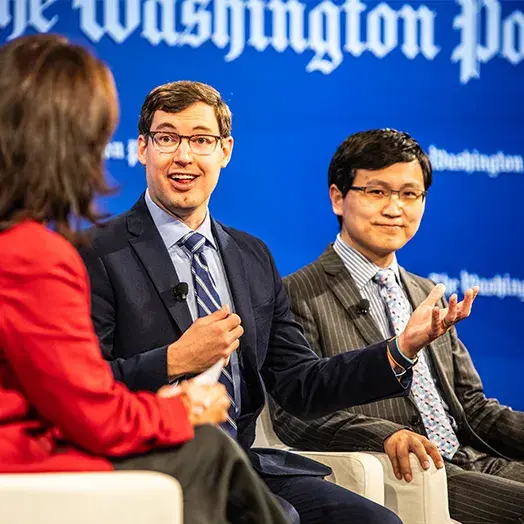Professor Melinda Buntin examines proposed site-neutral payment policies for Medicare, which would pay hospital outpatient departments the same as lower-cost settings for similar services and could dramatically reduce Medicare spending annually.

Who stands to gain from Medicare site-neutral payment policies?
As federal policymakers search for ways to rein in health care spending, scrutiny has landed on Medicare’s existing practice of paying hospital outpatient departments higher rates than ambulatory surgical centers and physician offices for similar services. Proponents of shifting to a “site-neutral” approach, which would align payments across sites of care, contend that significant cost savings could be gained for both Medicare and patients.
In an effort to explore the financial impact such a change would have on hospitals as well as taxpayers and beneficiaries, Melinda Buntin and Kathryn Linehan—both faculty members working in Johns Hopkins’ Center for Health Systems and Policy Modeling—assessed the effects of three leading site-neutral policy options in a paper published recently in Health Affairs.
“We found that if any of the three proposed policy options had been implemented in 2021 [the year they analyzed claims], site neutral payments would have been approximately 50% lower across all targeted services, with savings ranging from $212 million to $7.36 billion,” notes Buntin, a Bloomberg Distinguished Professor at Johns Hopkins Carey Business School.
The variation was due to differences in the range of services and types of hospital outpatient departments included in the three policy options: one passed by the House of Representatives in 2023, another from the Actuarial Research Corporation, and a third recommended by the Medicare Payment Advisory Commission (MedPAC).
In examining the fallout for hospitals, the researchers note concern expressed by some that vulnerable populations—and the providers who serve them—could be disproportionately impacted by a shift to site-neutral payments. Buntin and Linehan found that small and rural hospitals would experience the least loss in revenue. Most impacted would be larger, nonprofit, teaching, and metropolitan hospitals, commensurate with their larger volume of outpatient care, says Linehan, an associate scientist at Johns Hopkins Bloomberg School of Public Health.
‘Startling’ out-of-pocket payments
Over the last dozen years or more, the researchers note that hospital systems have been incentivized to acquire physician practices and convert them into outpatient departments by the higher rates Medicare will pay compared to ambulatory centers and physician offices (which are paid the least). The rationale has been that full-service hospitals bear higher infrastructure costs, including 24/7 emergency services, regulatory requirements, and the need to serve as a safety net for vulnerable populations.
“Because of these site-dependent payments, hospitals have been acquiring physician practices to increase revenue,” explains Linehan. According to the American Medical Association, the percentage of doctors employed by hospital-owned physician practices has grown from 23.4% in 2012 to 34.5% in 2024. Around that same period (2012–2022), spending on outpatient services by traditional Medicare and its beneficiaries increased 71%, note Buntin and Linehan in their paper.
Buntin explains that when physician groups are acquired by hospitals, they tend to charge patients hospital rates, even for simple services like standard exams or routine imaging. “This can be very startling to patients, who pay approximately 20% of the Medicare-allowed payment amounts, resulting in higher out-of-pocket spending,” says Buntin.
In their analysis, the researchers found that a shift to site-neutral payments would lower beneficiaries’ responsibility for cost sharing, amounting to savings of $42 million to $1.5 billion across the three policy options.
What to Read Next

business of health
What does it take to lead the implementation of reliable AI in health care delivery?Driving value, ensuring access
Both health policy experts are quick to note that the goal of their analysis was not to recommend a particular site-neutral payment policy, but instead to illustrate the key factors that determine the varied magnitudes of savings, which could assist policymakers if they draft a site-neutral payment policy.
“Our goal through our work with the Center for Health Systems and Policy Modeling is to inform policy while driving value and ensuring quality and access to health care,” says Buntin.
“At the end of the day,” adds Linehan, “the goal is to have the right services, provided to the right patients, in the right place.”
The duo’s research has proved timely. Soon after their paper was published in June, Trump Administration leaders reached out to request data on site-neutral payment options, signaling an intent to potentially move ahead with implementing a site-neutral policy in some form. “We used evidence we had gathered to respond to their request for information,” says Linehan. “Our paper definitely brought attention to the issue.”


